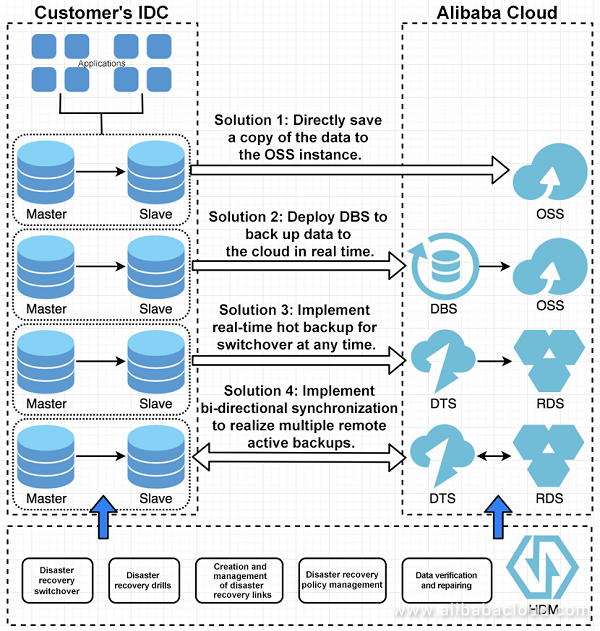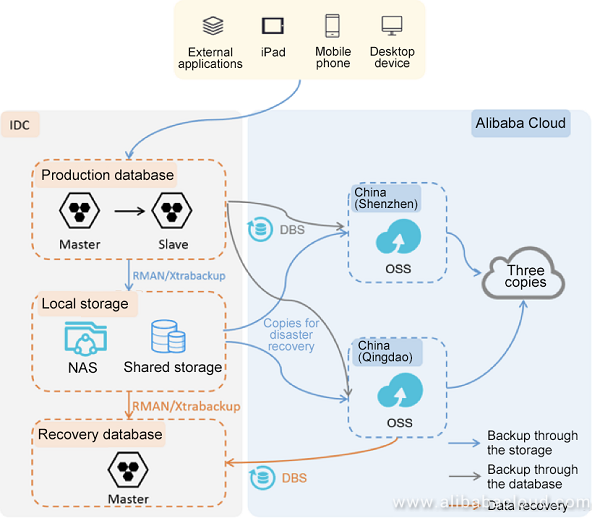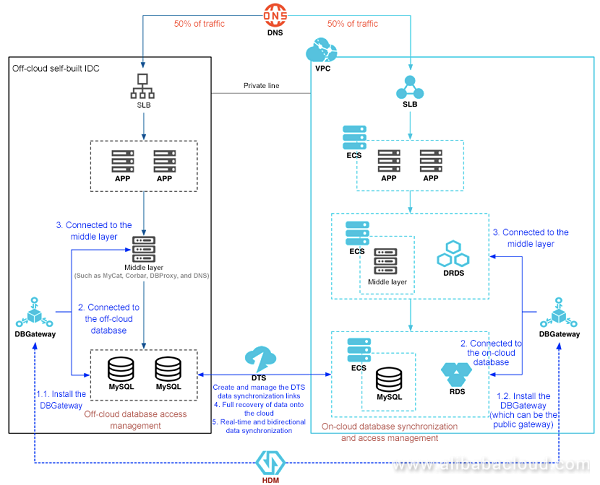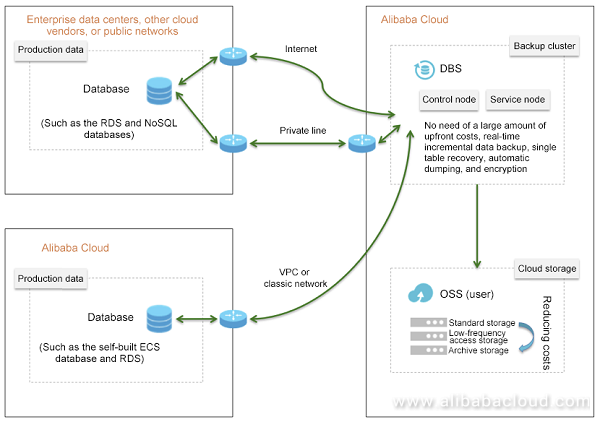The Alibaba Cloud 2021 Double 11 Cloud Services Sale is live now! For a limited time only you can turbocharge your cloud journey with core Alibaba Cloud products available from just $1, while you can win up to $1,111 in cash plus $1,111 in Alibaba Cloud credits in the Number Guessing Contest.
With the arrival of the Data Technology (DT) era, enterprises have become increasingly dependent on data. Data protection has become essential for enterprises, and only those who take preventive measures with sufficient preparations can survive in disasters. In the Best Practices for Enterprise Database Session at The Computing Conference 2018, topics related to disaster recovery attracted much attention. This article introduces the best practices of using Alibaba Cloud database cloud product portfolios to tailor the disaster recovery solutions conforming to the development status of enterprises.
Data is important resources for production of an enterprise. Once data is lost, the enterprise's customer information, technical documents, and financial accounts may get lost, which may hold back customer relation, transaction, and production. In general, data loss is classified into three levels:
To cope with economical loss caused by data loss, enterprises must take disaster recovery measures to protect data. The higher the enterprises' degree of informatization, the more important the disaster recovery measures are.
Disaster recovery involves two elements: disaster tolerance and backup.
An enterprise-class database disaster recovery system should be selected based on business requirements and full considerations must be given to the following factors: RPO, RTO, costs, and scalability. The system must also meet various requirements of database disaster recovery, including building of the disaster recovery environment, data synchronization, monitoring and alarms, drills, failover, and data verification and repairing.

After multiple rounds of iteration, the outstanding disaster recovery capabilities of Alibaba Cloud products are well proved. The following core products can help enterprises develop the database disaster recovery solutions for different scenarios or to meet different requirements.
In a disaster recovery scenario, we recommend that you integrate other Alibaba Cloud products such as DRDS and OSS. These products have undergone internal and external verifications of Alibaba Cloud and are proved to be highly reliable. You can use these products flexibly in the disaster recovery scenario.
If you set high requirements for data backup, for example, continuous real-time backup without affecting business operations, you can buy Database Backup Service to implement hot backup of databases. This service supports real-time incremental backup and data recovery in seconds. The following figure shows the architecture of the solution:

The architecture design is described as follows.
Deployment of key components:
(You can use either of the following methods to back up the off-cloud production data onto the cloud.)
Data recovery:
Architecture characteristics:
You can find all the following solutions in the enterprise-class database disaster recovery system: on-cloud elastic disaster tolerance, dual or multiple active backups, and three centers in two locations. The following takes multiple remote active backups as an example to describe the solution. This solution supports data-level remote dual active backups and one-click switchover to another data center to realize flexible scale-up or scale-down and future linear expansion.

Deployment architecture
As a database on-cloud backup channel, Database Backup Service is used together with OSS to develop a cloud database backup solution. It takes only five minutes for such a solution to implement real-time backup with a second-level RPO. (The RPO indicates the maximum duration allowed for data loss when the database fails. A smaller RPO is often desired.)

When Database Backup Service is deployed, the entire backup process is unlocked and does not block any service requests on the databases. You can choose to back up the entire instance or a table. Once a misoperation is detected, you can use Database Backup Service to recover data at any time point. Data of the entire instance or the specified table can be recovered to the state one second before the misoperation. Database Backup Service is available in multiple specifications, which meet the backup requirements of the database with a size ranging from hundreds of MBs to hundreds of GBs.
Currently, the backup system time provided by Database Backup Service has been proved by massive users. Database Backup Service not only supports real-time backup and second-level RPO, but also has the table-level recovery capability. It helps users to recover only valuable data and the RTO can decrease to several minutes.
It is worth mentioning that real-time backup has been tested in years of Double 11 shopping festivals. Database Backup Service will further provide the online query function. After a data backup task is completed, you can immediately run SQL statements to query backup data without waiting. You can also export the query results into Excel or Word files for further analysis, or generate Insert and Replace statements to correct data.
Shape Alibaba Cloud's Future: New Round of Alibaba Cloud MVP Nomination for December 2018 Opens Now!
Flink State Management and Fault Tolerance for Real-Time Computing

2,599 posts | 764 followers
FollowAlibaba Clouder - February 11, 2019
Alibaba Clouder - July 22, 2020
Alibaba Developer - December 16, 2021
Alibaba Clouder - January 10, 2018
digoal - January 30, 2022
Alibaba Container Service - December 18, 2024

2,599 posts | 764 followers
Follow Black Friday Cloud Services Sale
Black Friday Cloud Services Sale
Get started on cloud with $1. Start your cloud innovation journey here and now.
Learn More Function Compute
Function Compute
Alibaba Cloud Function Compute is a fully-managed event-driven compute service. It allows you to focus on writing and uploading code without the need to manage infrastructure such as servers.
Learn More Database for FinTech Solution
Database for FinTech Solution
Leverage cloud-native database solutions dedicated for FinTech.
Learn MoreMore Posts by Alibaba Clouder
Raja_KT February 10, 2019 at 5:29 pm
Good one. Are there clients that use solution 1 , saving a copy of the data to an OSS instance?